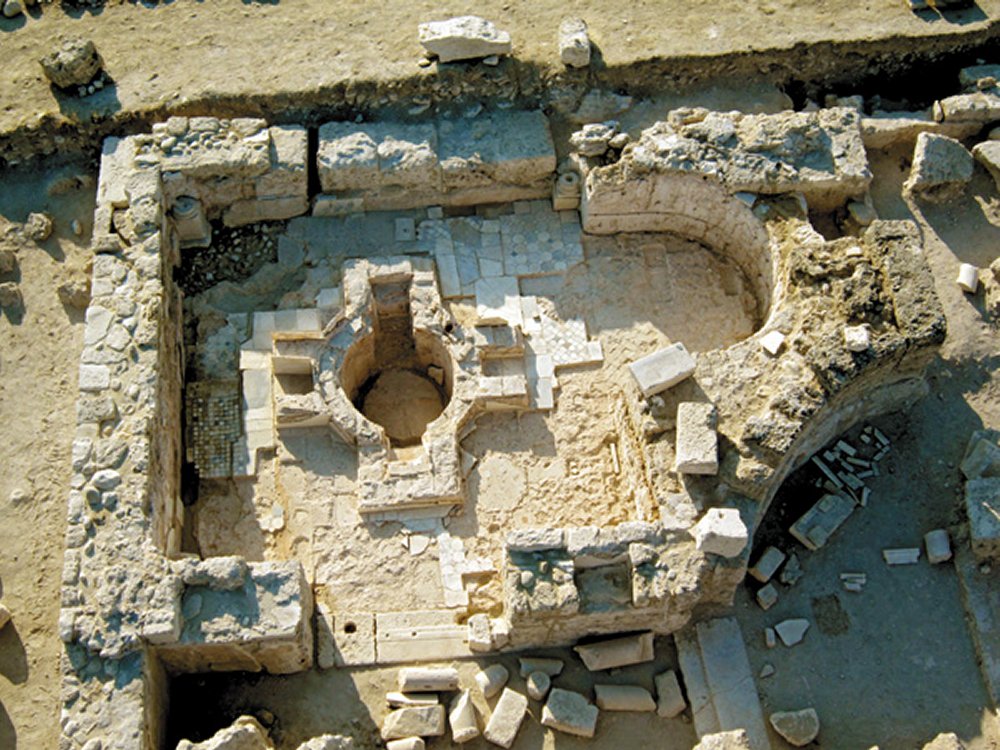MessageToEagle.com – The seventh and final letter to the churches of ancient Asia Minor is to the church in the city of Laodicea, a major hub of Christianity. The Laodicean Church was one of the Seven Churches of Asia mentioned in the Bible.
The city, was originally named Diospolis (‘the city of Jupiter’) and then Rhoas. It was founded by the Seleucid king Antiochus II, a king of the Hellenistic Seleucid Kingdom who reigned 261 BC–246 BC) and named for his wife Laodice about 260 BC.
He rebuilt the city and populated it with Syrians and Jews who migrated from Babylonia.
Laodicea was a wealthy, industrious city in the province of Phrygia in the Lycos Valley, located in the Lycus River Valley together with Hierapolis and Colossae, cities mentioned in Paul’s letter to the Colossians
The Laodicean Church in the ancient city of Laodicea known as “one of the “Seven Churches of Asia” mentioned in the Bible, will be opened to tourism at the end of this year.
The church is nearly a 1,700 year-old unique structure, which survived despite the city’s total collapse due to an earthquake in the 7th century A.D.

Laodicea is mentioned several times in the New Testament, in both Paul’s letter to the Colossians (2:1, 4:13–16) and the Book of Revelation, in which it is one of the seven churches in Asia [Minor] to receive the message revealed to John that the “time is near” (Revelation 1:3, 11, 3:14–22).
The apostle Paul makes at least 4 references to the city in his epistle to the Colossians. Interestingly, he references the city though he had never visited it.
- Now I want you to understand what great concern I have for you, and for those in Laodicea, and as many as have not seen my face in the flesh; . . . (Col. 2:1)
- For I bear witness to him (Epaphras, a preacher who was pivotal in the conversion of many people in Colossae) that he has much zeal for you, and for those in Laodicea, and for those in Hierapolis (4:13).
15 Give our best wishes to the believers in Laodicea and to Nympha and the church that meets in her house. 16 After you read this letter, make sure that it is read also in the church at Laodicea. At the same time, you are to read the letter that the believers in Laodicea will send you. (4:15, TEV)
Paul’s letter suggests that Laodicea had a very early Christian community with close ties to the one in Colossus (11 mi away), possibly having been evangelized by Paul’s disciple Epaphras, who is mentioned by name in the epistle.
Laodicea, located at the junction of several important trade routes, is 77 kilometers (48 miles) from Philadelphia (Alasehir) and 155 kilometers (96 miles) from Ephesus.
Laodicea – one of Asia Minor’s most flourishing cities – was built upon seven hills. The city minted coinage, some of which have inscriptions showing evidence of the worship of the pagan deity Zeus and of the emperors.
According to first-century Greek historian Strabo, Laodicea was also home to a well-known medical school. Remains from the Hellenistic and Roman periods include two theaters, a stadium and a nymphaeum, a monumental fountain that continued in use into the Byzantine period (fourth–seventh centuries), when it was walled off and converted into a Christian structure.
The city often suffered from earthquakes. It was completely destroyed when an earthquake occurred during the reign of Emperor Nero. The inhabitants were so wealthy that they declined Roman assistance to rebuild the city and instead opted to quickly rebuild it at their own expense.
It was at the end of January 2011 that a large, well-preserved church had been found at Laodicea using ground-penetrating radar. According to excavation director Celal Simsek of Pamukkale University, the church was built during the reign of Constantine (306–337) and destroyed by an earthquake in the early seventh century. There are 11 apses—one facing east and five each on the northern and southern sides.
Floral and geometric mosaics as well as opus sectile pavement cover the floors. The cross-shaped marble baptistery, located at the end of a long corridor on the north side of the church, is one of the oldest and best-preserved ever discovered.
Copyright © MessageToEagle.com. All rights reserved. This material may not be published, broadcast, rewritten or redistributed in whole or part without the express written permission of MessageToEagle.com.
source: Bible.org







